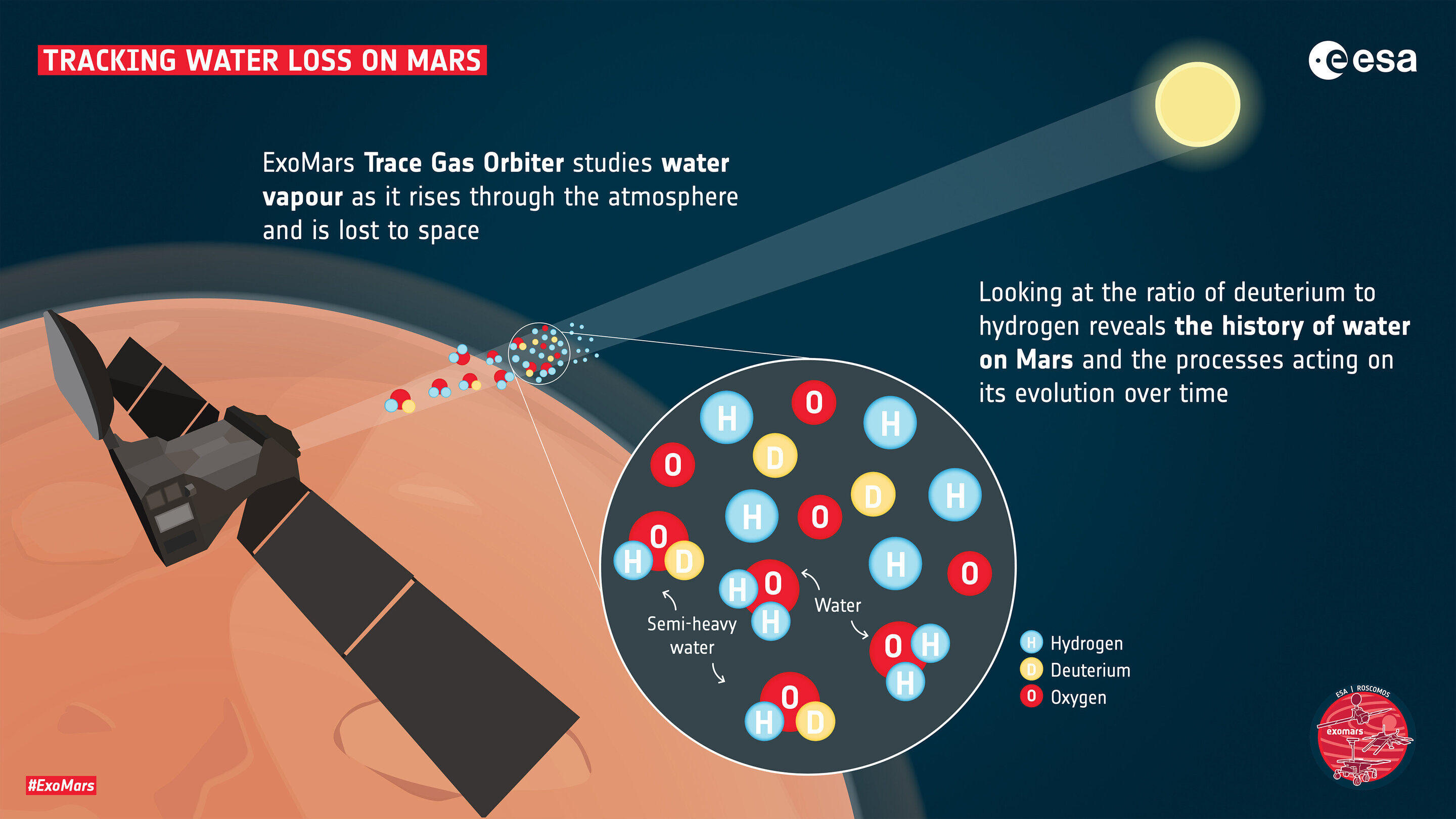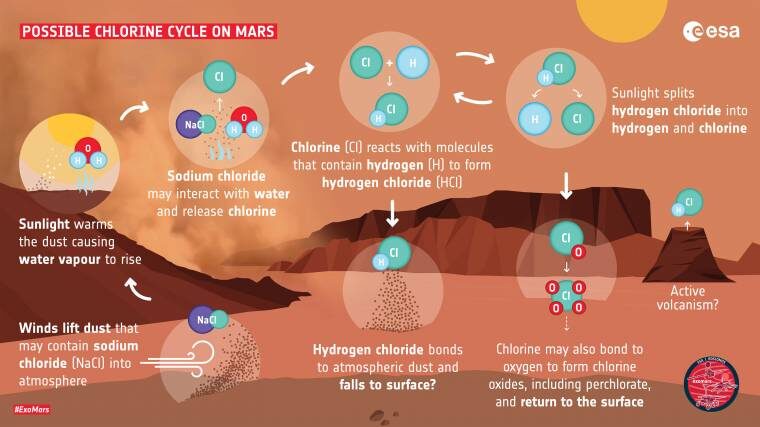
The traces of ancient valleys and river channels suggest liquid water once flowed across the surface of Mars. Today, the water is mostly locked up in the planet's ice caps or buried underground.
But some of it is vaporising, in the form of hydrogen leaking from the atmosphere, according to the new research co-authored in the journal Science Advances by two scientists at Britain's Open University.
They detected the vapour by analysing light passing through the Martian atmosphere using an instrument called the Nadir and Occultation for Mars Discovery.
The device is travelling aboard the ExoMars Trace Gas Orbiter, a joint mission between the European Space Agency and Russia's Roscosmos.
"This fantastic instrument is giving us a never-before-seen view of water isotopes in the atmosphere of Mars as a function of both time and location," Manish Patel, senior lecturer in planetary sciences at the Open University, said.
"Measuring water isotopes is a crucial element of understanding how Mars as a planet has lost its water over time, and therefore how the habitability of the planet has changed throughout its history," he said.
Comment: Possibly over a much shorter period of time than they think: Did Earth 'Steal' Martian Water?

On Wednesday, the Chinese Tianwen-1 probe entered the planet's orbit after launching from southern China last July, in the latest advance for Beijing's ambitious space programme.
The day before, the United Arab Emirates' "Hope" probe also successfully entered Mars' orbit, making history as the Arab world's first interplanetary mission.
More information: Oleg Korablev et al. Transient HCl in the atmosphere of Mars, Science Advances (2021). DOI: 10.1126/sciadv.abe4386 Journal information: Science Advances



Comment: See also: